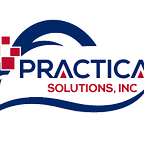Virtual Desktop Infrastructure
The term Virtual Desktop Infrastructure was first introduced by VMware in 2006 and has since been popularly used across the IT industry. Virtual desktop infrastructure is a technology that offers its users a virtualized desktop environment in a remote set up. The desktop environments are hosted on a centralized server and then deployed to end-users. Virtual Desktop Infrastructure (VDI) provides the freedom of accessing desktops from anywhere through a client software. The access to VDI varies from organization to organization, and once that has been done, the end-user gets the exact look and feel like that of an actual workstation.
VDI is categorized into persistent and non-persistent.
· In a persistent VDI, a user is assigned the same virtual desktop each time with personalized changes being retained as it is. This provides a feel exactly of a physical desktop.
· Non persistent VDI on the other hand are generic in nature, with no customized changes saved after a session. This is ideally useful in a setup where multiple users perform repetitive tasks with no particular need of customization settings as such.
VDI has been making waves since long, primarily because of ease of access, security, and mobility among other benefits. One of the best-selling USPs of VDI is the ease of setting up and managing the IT infrastructure. Operating system or new version of any application is easily installed through a central desktop, without requiring physical device of the end-users. With VDI, you can add or remove new users through Microsoft Active Directory in an instance. And your IT admin can manage permissions and accesses remotely. A VDI set up offers businesses with agility, offering employees greater flexibility.
Microsoft Teams is one such example that offers chat, collaboration, audio and video meetings features in a virtualized set up. Microsoft teams supports multiple configurations in a virtualized environment — VDI, shared, persistent and non-persistent. This application enables you to build stronger teams by enhancing productivity levels. Within the Teams app, employees can chat, call, attend meetings, design, and automate workflows together and share documents with ease. Team members can also access shared files from one single place. Furthermore, Microsoft Teams also allows you to integrate with third party tools such as Survey Monkey, Zendesk, and many more. Microsoft Teams enhances productivity as all your collaboration tools are available under one roof — be it chats, meetings, files, or tasks. A user can focus better on work, as MS Teams compartmentalizes data as per context relevance. Instead of wasting time browsing through your inbox for a particular piece of information, MS Teams channelizes that data for you for easier reference, thereby saving time.
Schedule a consultation today with our in-house experts to learn more about how Microsoft 365 can be useful for your business and enable efficient, productive functioning of your teams and business operations.
